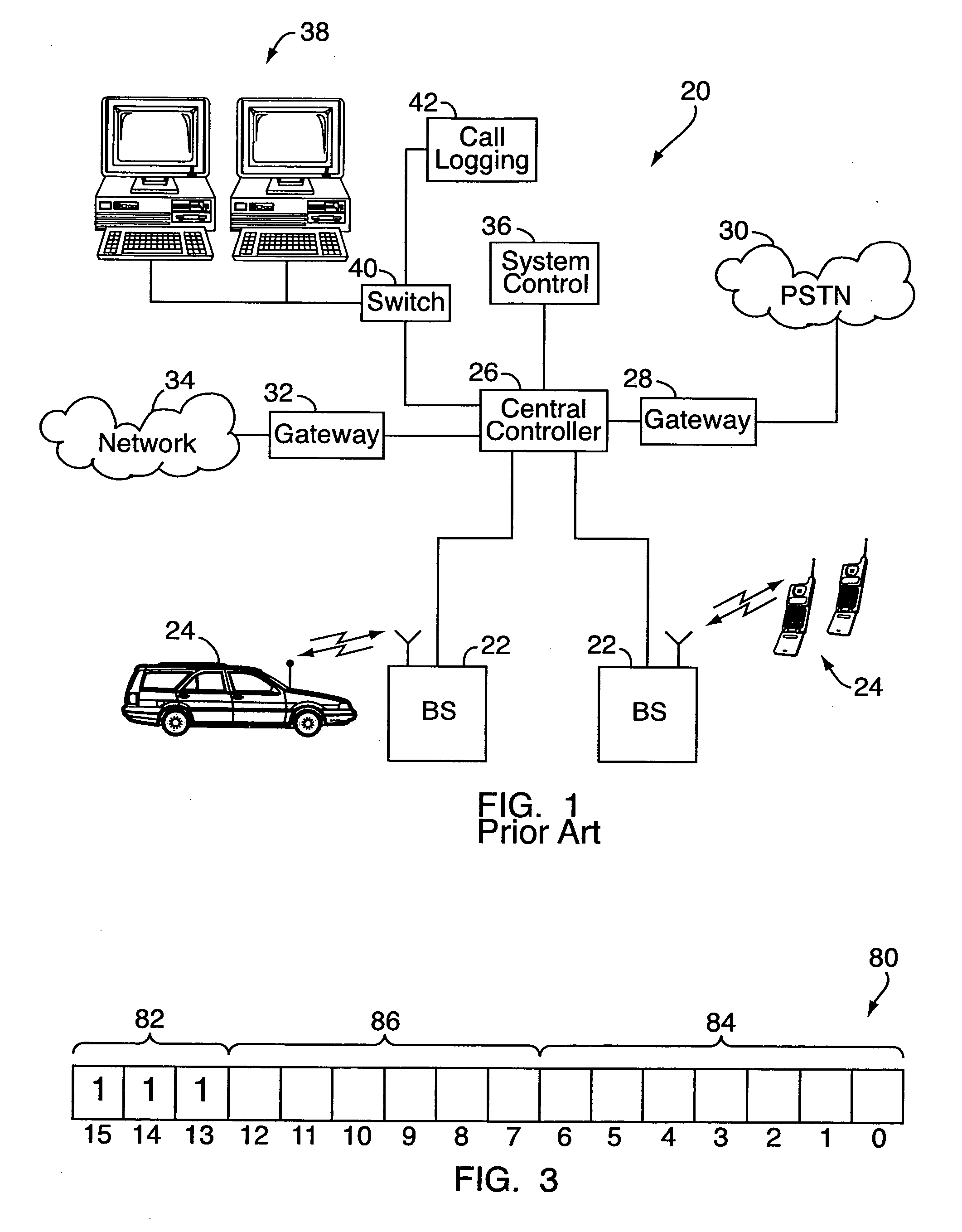Push-to-talk group call system using CDMA 1x-EVDO cellular network
a group call and push-to-talk technology, applied in the field of communication, can solve the problems of low audio propagation delay, non-voice data transfer rate, and typically less than 300 ms, and achieve the effect of reliable and fast transmission
- Summary
- Abstract
- Description
- Claims
- Application Information
AI Technical Summary
Benefits of technology
Problems solved by technology
Method used
Image
Examples
Embodiment Construction
[0026] With reference to FIGS. 2-13, a push-to-talk (“PTT”) group call system 50, for use, e.g., as a public safety wireless communications network, includes a CDMA-based 1x-EVDO radio access network 52 operably connected to a PTT application service network / infrastructure 54 through one or more IP (Internet Protocol)-based networks 56. The radio access network 52 has one or more fixed base stations 58 (“BS”) each with various transceivers and antennae for radio communications with a number of distributed mobile stations, e.g., portables 60a and / or mobiles 60b. The base stations 58 are in turn interfaced with the IP network 56 through one or more controllers or control centers 62, which act as the interface between the wireless / radio end of the radio access network 52 and the IP or other networks 56, including performing the signaling functions necessary to establish calls and other data transfer to and from the mobile stations 60a, 60b. The controller 62 may be part of the base sta...
PUM
 Login to View More
Login to View More Abstract
Description
Claims
Application Information
 Login to View More
Login to View More - R&D
- Intellectual Property
- Life Sciences
- Materials
- Tech Scout
- Unparalleled Data Quality
- Higher Quality Content
- 60% Fewer Hallucinations
Browse by: Latest US Patents, China's latest patents, Technical Efficacy Thesaurus, Application Domain, Technology Topic, Popular Technical Reports.
© 2025 PatSnap. All rights reserved.Legal|Privacy policy|Modern Slavery Act Transparency Statement|Sitemap|About US| Contact US: help@patsnap.com



